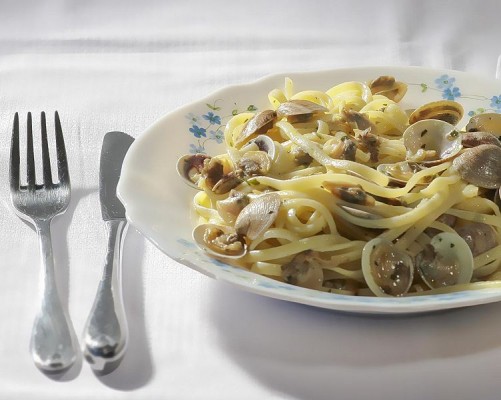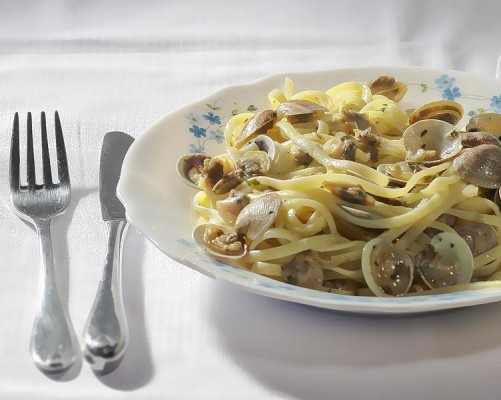
Here's the recipe that converted Barbara Stein to full-fledged Linguine and Clam Sauce fandom. If you can boil pasta, you can make this recipe.
I remember the first time I ever ordered Linguine and Clam Sauce in a restaurant. It was early in our our marriage and I think we had two children, both of whom were really young. We could still afford to eat at nice restaurants because they would just nibble from our plates.
We were at a really high-end seafood restaurant for my husband's birthday and I just knew that I would love Linguine and Clam Sauce. What's not to love -- pasta, clams, garlic? Well, what arrived at the table did not look very appetizing. It looked like brown grease. And that's exactly what Doug told the waiter when we asked him to take it back. He said, "This looks like brown grease," and that waiter's eyes got as big as saucers. It really was a nice restaurant, but, clearly, Linguine and Clam Sauce was not their specialty.
I have tried Linguine and Clam Sauce a few times since, and I have not ever been impressed. Until I tried this recipe. This is what Linguine and Clam Sauce should taste like (in my humble opinion). It should not be creamy, or thick like gravy. It should be just like this. Even my kids love it.
This recipe could not possibly be any easier. If you can boil pasta, you can make this recipe. It's also budget-friendly and, I think, a great recipe to have in any cook's repertoire. Pair it with some good bread, and a green salad, and you have dinner.
Linguine and Clam Sauce
- 2 (6.5 ounce) cans minced clams, with juice
- 1/4 cup butter
- 2 T. olive oil
- 2 T. vegetable oil (or more olive oil if you prefer the flavor)
- 1 t. minced garlic
- 1/2 t. crushed red pepper
- 1 T. dried parsley
- ground black pepper, and salt, to taste
- 1/4 T. dried basil
- 16 ounce package linguine pasta
Cook pasta in salted water according to package directions.
Meanwhile prepare the sauce: Combine clams with juice, butter, oils, minced garlic, parsley, basil, and pepper in a large saucepan. Place over medium heat until simmering; keep warm. When pasta is done, drain and return to pan or large serving bowl. Pour sauce over and toss. Taste and season with salt if necessary.
NOTE: You can also use fresh parsley and basil if you have it handy -- about 2 T. chopped Italian parsley and about 1 T. chopped fresh basil. If you use fresh herbs, add them to the sauce when the pasta is almost finished cooking, so they don't cook too long.
Copyright 2013 Barbara Stein
Image via Wikipedia
About the Author

Guest
We welcome guest contributors who graciously volunteer their writing for our readers. Please support our guest writers by visiting their sites, purchasing their work, and leaving comments to thank them for sharing their gifts here on CatholicMom.com. To inquire about serving as a guest contributor, contact editor@CatholicMom.com.



.png?width=1806&height=731&name=CatholicMom_hcfm_logo1_pos_871c_2728c%20(002).png)
Comments